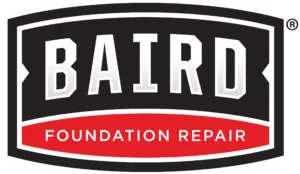FAQ
Frequently Asked Questions: Cracked Concrete & Foundation Repair
Below are answers to some of the most common questions we get from homeowners about foundation and concrete crack repair.
What are the steps in foundation repair?
- Prepare the job site: Our team will lay down tarp and cover surfaces to protect your home’s exterior and landscape.
- Dig around foundation: Digging around the perimeter of the foundation allows room to install piers.
- Lift the foundation: Installing piers will slowly lift the foundation of your home, allowing the foundation to stabilize before repairs begin.
- Sealing the holes: Soil will be placed to fill the holes around the foundation. Over time, the soil will set and compact to completely seal where the foundation piers are placed.
Should I wait to fix my foundation?
The short answer: No. Waiting to repair your home’s foundation can cause more expensive damage over time, decrease your property value, or lead to serious safety issues.
How do I know if I need foundation repair?
Common signs include:
- Sticking doors or windows
- Uneven floors
- Cracks in exterior foundation
- Tilting chimneys
- Floor or ceiling gaps
- Indoor floor cracks
Can water damage my foundation?
Yes. Heavy rain and flooding are the most common sources of doors and windows sticking, pooling water, or musty smells. When soil retains water, it becomes soft and begin to sink under the weight of your home.
What type of foundation do I have?
There are several variations of home foundations. Click here to find out which foundation you have.
How does weather affect foundation?
Changes in weather cam cause soil around your foundation to contract and expand which adds and relieves pressure at different times. This can cause your foundation to move or shift.
How long does it take a house to settle?
There is a normal amount of ‘settling’ expected when a home is built. As the weight of the home is distributed over soil you can expect a couple of inches of sinking to happen into the ground. It can typically take one to two years for the soil to experience all of the seasonal effects and temperature changes that can cause settling to happen. Over time, the normal settling can become problematic if you see signs of foundation problems.
Can pool cracks be fixed?
Yes. There are a few different solutions for pool cracks, read more here.
How do you repair cracks in a concrete driveway?
Baird Foundation Repair uses a silicone-based sealant for cracks that is specially formulated to provide long-lasting flexibility and to stand up to harsh weather conditions.
Can my crawl space be repaired?
Yes. A crawl space can be repaired by installing reinforced posts to replaced any damaged or sinking posts.
Should I soak my foundation?
Soaker hoses can be used to water soil around your home’s foundation to keep it from becoming too dry in the hot summer months.
What type of sealant is used for cracks?
Baird Foundation Repair uses NexusPro, a silicone-based sealant for joints and cracks specially formulated to provide long-lasting flexibility and to stand up to harsh weather conditions. Unlike traditional polyurethane sealants, NexusPro resists UV rays, which means it won’t crack, bubble or dry out.
Is concrete sealant expensive?
NexusPro is cost-effective because it offers a solution that is long-lasting, unlike the urethane-based products available at big-box DIY stores that must be replaced regularly.
Is the sealant really long-lasting?
Yes. Because it is silicone-based, not urethane-based, NexusPro won’t degrade over time, even when exposed to UV radiation and extreme temperatures. This ensures that it remains flexible and waterproof for years.
How is concrete sealed?
We use SealantPro, it penetrates deeply into pores and actually bonds with the concrete, creating a strong, permanent barrier. In just one clear, non-yellowing application, SealantPro permanently protects your concrete from its strongest enemies: moisture, chemical elements and seasonal changes.
Why do some homes have a crawl space?
Crawl spaces are usually built to avoid the cost of a traditional slab job. They also provide a handy place to run HVAC and plumbing equipment without taking up space in the walls of your home.
Why should you seal your crawl space?
Crawl spaces are supposed to circulate outside air, but when they’re left completely open to the outdoors they can be infiltrated by pests and moisture. Encapsulation seals off these invaders while still providing the ventilation underneath your home.
What is trench breaker foam?
Trench breaker foam is used to prevent the erosion of soil around pipe lines. It is a safer, quicker solution to water and soil interference in pipe line trenches than it’s predecessor – sand bags.
Foundation and concrete repair solutions.
To learn more about which products will work best for the job, visit Supportworks, our go-to solution for foundation and concrete repair.

